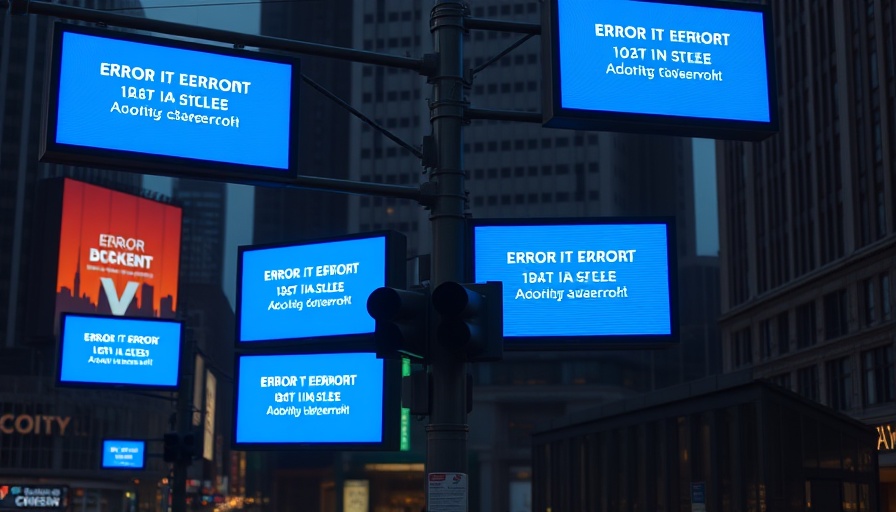
Goodbye Blue: The Era of the Black Screen of Death Begins
The iconic Blue Screen of Death (BSOD) that has been a hallmark of Windows operating system for almost four decades is set for a significant change. Microsoft is replacing its legendary BSOD with the Black Screen of Death as part of its latest updates intended to enhance user experience and improve system resilience. This notable shift signals not just a cosmetic change, but also a comprehensive strategy to bolster security and user recovery processes within the Windows environment.
Innovating Beyond the Screen
The change to a black screen coincides with Microsoft’s Windows Resiliency Initiative, launched in response to the CrowdStrike outage that affected millions of users and businesses last year. This initiative aims to embed robust security features that will minimize the risk of future outages. With such disruptions fresh in the memory of consumers and businesses alike, the redesign of the error screen may be a strategic move to restore public confidence in Windows security measures. By rebranding an old, feared screen with a more subdued black backdrop, Microsoft appears to be signaling a new era of careful scrutiny and enhancement of its service reliability.
Decoding the Significance of the Black Screen
Some might question why the color change matters when it comes to performance and reliability. The Black Screen of Death can be viewed as Microsoft’s attempt to refresh users' experience with a less threatening interface. The pale blue screen has long been associated with hardware issues, crashes, and vast frustrations. The psychological effect of switching to a black screen foreshadows not only the company’s commitment to solving these problems but also sends a sensory message about a smoother journey ahead.
From Frustration to Recovery: A New Feature Perspective
In addition to the new appearance, Microsoft is implementing a quick machine recovery feature. This aspect was developed to ensure a seamless user experience even in the face of unexpected crashes. A successful recovery mechanism could mark a staunch improvement that goes beyond compiling user frustrations into a single dreaded screen message. It signifies that systems are bolstered and ready to respond rather than simply displaying a soliloquy of failure.
A Legacy of Change: Reflecting on the Blue Screen
To truly appreciate the change, we need to look back at what the BSOD represented over its lengthy tenure. Since its inception in 1985, the blue screen quickly became a symbol of technical woes—invoking anxiety and discouragement among users. However, it also became a cultural artifact, marking numerous hilarious memes and moments of despair among tech-savvy individuals everywhere. Moving forward, the memories and stories cast by the BSOD will remain as sepia-toned reflections, cherished by users who’ve grown more resilient over the years.
The Road Ahead: Forecasting Tech Trends
With the rebranding of the BSOD, we stand on the precipice of a larger movement within the tech industry towards greater reliability, efficiency, and user-centered innovation. Experts predict that such shifts may influence other tech giants to rethink their user interface strategies and focus on deeper engagement with customer feedback. The initiative not only reinforces the notion of adaptability but also aligns with a growing trend regarding the personal connection users have with their technology in a world increasingly focused on social responsibility and sustainability.
Engagement and User Education: Essential Components
In the context of these substantial updates, user education will be crucial. As technology becomes more intricate, educating users about the implications of such changes will encourage acceptance and create a more informed customer base. Microsoft has an opportunity to lead in teaching tech literacy levels among users—from understanding error messages to interacting constructively with technological tools.
The transition from the notorious BSOD to an updated interface marks a company embracing change not just for its sake but also for its users’ comfort and security. As consumers adapt to the new Black Screen of Death, their experiences will shape the future of Microsoft and the tech industry at large, melding together design and functionality in ways that prioritize user empowerment and resilience.
 Add Row
Add Row  Add
Add 



Write A Comment